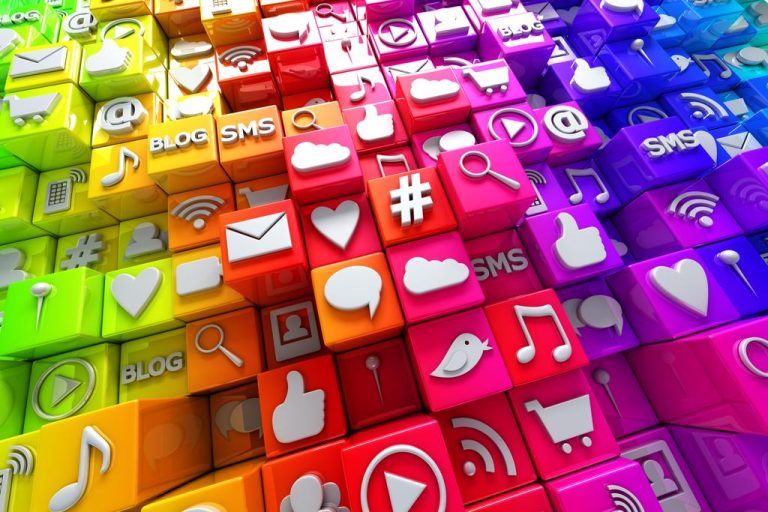Coaching or psychotherapy – in view of the large number of coaching offers and long waiting times for therapy places, this is a very relevant question. Where are the differences?

Coaching – help for self-help
You often encounter coaching in a professional context. It is usually offered to prospective or already established executives at middle, upper or top management level. This type of coaching is called business coaching. This is usually about topics that are highly relevant to the job. Starting with management and communication issues, through planning one’s own career, to questions relating to one’s own personality development.
Increasingly, however, you will also find offers for private topics, so-called “life coaches”. They generally see themselves as (systemic) life coaches and offer their services, for example, as bereavement support, fitness coaches, nutrition coaches or even crisis helpers in all situations. The exercise of a consulting or coaching activity is generally not regulated by the proof of certain qualifications. It is not a protected professional title. From today you can call yourself a coach or consultant and work as a freelancer.
On the other hand, this makes the selection more difficult for those people who would like to be supported by an experienced and well-trained coach. For this reason, some well-known associations have taken up the cause of separating the wheat from the chaff and providing orientation through certification. In order to be allowed to work as a psychotherapist, however, basic training and qualifications are required.
A coach does not advise – or does he?
Coaching always sees itself as helping people to help themselves. In coaching, the coach and coachee (as the person who takes advantage of coaching is called) develop possible goal- and solution-oriented measures to clarify a concern or to achieve a clearly defined goal. The focus is always on the coachee. With certain questioning techniques, methods and tools, the coach tries to let his coachee find the solution himself. The question of whether a coach should also give advice in the sense of advice in his work is a controversial issue.
Ulrich Dehner, managing director of the Konstanz seminars, psychotherapist and DBVC coach, says that the “dogma that coaches are not allowed to give their clients advice” is a misunderstanding: “A correct idea from psychotherapy is wrongly based on the coaching situation.”
In general, the understanding of a consultant (consultant) is characterized by the fact that they develop concrete proposals for defined problem situations, present them and, if necessary, implement them themselves afterwards. A (psychological) coach or consultant, however, should give few or no concrete suggestions or tips for a solution, but work together with the coachee to find measures and solution steps that he can also successfully implement in his work or living environment. So it is indeed a fine line and a question of attitude as to how much advice can help the coachee in overcoming his or her challenges.
Psychotherapy looks at the soul
Psychotherapy literally means “treatment of the soul”. “Psychotherapy is the targeted treatment of a mental illness. The treatment should aim to remedy a specific problem and should therefore be limited in time.” It is associated with so-called mental disorders with illness value. Mental disorders are identified here in particular as “disorders of thinking, acting and experiencing”, which are treated and treated with psychotherapy.
Well-known symptoms include depression, anxiety, eating disorders, compulsions and psychosomatic illnesses. The latter include, for example, tinnitus, so-called vertigo or irritable bowel syndrome. These are clinical pictures whose causes cannot really be determined physically and are therefore explained psychosomatically. Symptoms such as headaches, migraines, back, neck or shoulder pain or digestive problems show that the balance between body and mind is no longer correct. Finding the actual cause and possible and effective treatment measures is the task of psychotherapy.
“Alcohol or drug addiction, mental illnesses or the therapeutic processing of a person’s entire life history are exclusively a matter for appropriately trained psychotherapists, doctors and medical institutions.” Even if a coach has dual qualifications (as a coach and as a licensed therapist), care must be taken to separate the roles rather than to mix them up.
Difference between coaching and psychotherapy
When is a psychotherapeutic treatment method mandatory and when does coaching help? In principle, the suffering of the patient is of considerable importance with regard to the making of a psychotherapeutic diagnosis.
To a large extent, both personal perception and the perceived depth of the problem, in relation to the limitations in work or everyday life, determine whether someone is classified as sick (patient) and is therefore sent to psychotherapy. The extent and intensity of the “suffering pressure” and “depth of the problem” as well as the willingness and ability to undergo psychotherapy are decisive for the success of the therapy.
From a basic understanding, coaching is about self-motivated further development – mainly in a professional context – or about confronting topics with self-confidence and tackling them in a solution-oriented manner. Coaching is therefore seen as a measure that refers to a performance and action process by people. “Coaching is positively associated with improving performance and is therefore highly valued as a personnel development tool. Psychotherapy, on the other hand, is associated with illness, deficit and loss of performance.”
In principle, coaching is therefore primarily only suitable for people who are mentally healthy. Above all, functioning skills for self-management in everyday life are used as a decisive criterion. However, if these abilities are not (or no longer) present and are disturbed, then restoring mental health takes priority. The need for psychotherapy is then clearly indicated here.
Combination of coaching and psychotherapy
First of all, coaching and psychotherapy have similarities with regard to the setting (i.e. the form of execution). Both the therapist and the coach act as interlocutors for patients and clients. Both use psychological methods and intervention techniques.
In both cases, the first step is about insight and knowledge processes, which then enable further steps towards solution and further development. Many of the methods, models and tools used in coaching practice have their origins in various psychotherapeutic schools.
Example: schema therapy
For example, schema therapy is becoming increasingly popular in the field of psychotherapy. On the one hand, many findings from previously developed therapeutic procedures (including behavioral therapy and depth psychology) are incorporated. On the other hand, it is easy to understand and catchy for patients and coachees. Schema therapy is used, for example, in the treatment of depression, anxiety disorders, personality disorders, but also in eating disorders, substance abuse, in couple treatment and long-term relationship disorders.
The aim of schema therapy is to understand thoughts and feelings as well as recurring patterns of action in their origin and effect. As a result, the patient and therapist try to change these patterns in such a way that they meet their own needs and thus the level of suffering decreases or, at best, is eliminated. Thus, needs and emotions play a very important role as the basis of action patterns in schema therapy.
Nevertheless, the assumptions and derivations on which schema therapy is based can also be legitimately applied in coaching. For example, when a manager takes advantage of coaching with regard to the type of leadership. Dominant leadership behavior coupled with aggressive and hurtful behavior towards employees can be a pure diversionary maneuver (overcompensation). You appear particularly self-confident and act in a dominant manner, although you actually feel insecure and afraid of being dominated or helpless yourself. This narcissistic pattern may have been solidified by (early childhood) experiences that were characterized, among other things, by little appreciation, empathy and recognition (dysfunction, the hurt inner child).
Conclusion
Although coaching uses some methods that are also used in psychotherapeutic areas, this is not to be understood as disguised psychotherapy for managers striving for self-optimization. Rather, methods and models are used both in coaching and in psychotherapy because they have been able to prove their problem-related effectiveness. Ideally, they complement each other rather than exclude each other.
Perceived suffering and the depth of the problem that occurs in everyday life can be used as the first distinguishing features when it comes to the question: “Coaching or psychotherapy?” Professor Thomas Fydrich from the Humboldt University in Berlin uses a simple example to illustrate how close and yet distant coaching and psychotherapy can be. “Many people are afraid of exams. To see where the fear comes from and to regain confidence in your own abilities – that would be more of a case for the coach. But if this fear gets so bad that postponing exams interferes with your own life planning conflict, test anxiety becomes pathological.”
In the case of severe mental illnesses, which can be traced back to experienced trauma, for example, through conspicuous addictive behavior (medication, alcohol, drugs) or compulsive behavior, the symptoms of a clinical picture are obvious and unambiguous. Here only psychotherapeutic help can be the means of choice.




